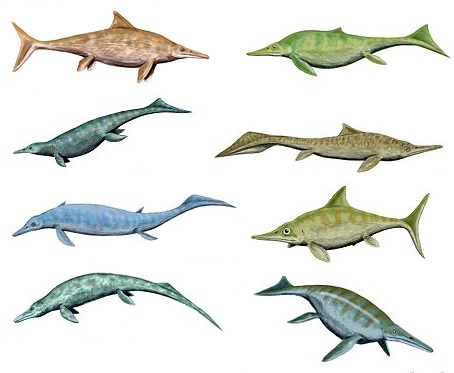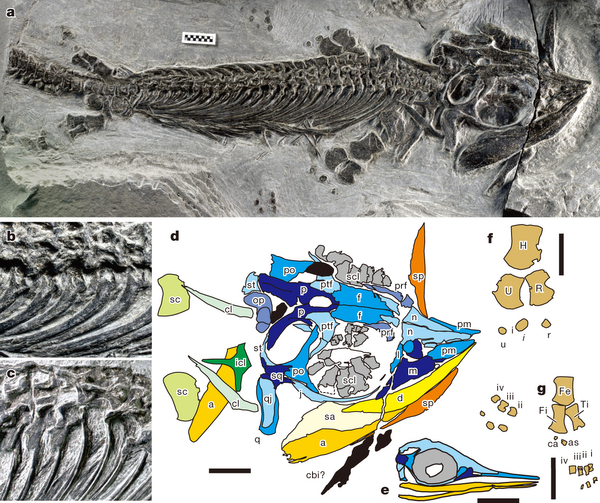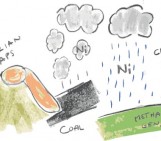Close your eyes. Go back in time 250 million years, and the world would seems as strange to you as a different planet. On land, there was a whole host of bizarre and now extinct animals: strange, crocodile-like things, and the precursors of dinosaurs; weird mammal-like beasts, that looked like the lost offspring of a hippo and a monitor lizard.
In the seas, marine reptiles dominated. A whole range of unusual animals lived, such as the long-necked plesiosaurs, popularised with reference to the mythical Loch Ness monster. Alongside these were the equally unusual ichthyosaurs. At first glance, a typical one might look like to you much like a dolphin.
However, the now extinct ichthyosaurs were part of a completely different group of animals, more closely related to lizards and their cousins than mammals. Their origins have remained quite a mystery until recently, simply because the fossil record is not a fair mistress and often only ever gives us fragmentary snapshots of what are naturally complicated patterns.

Ichthyosaurs were quite diverse beasities! (Source, by Nobu Tamura)
Like many things in palaeontology, though, this has recently been transformed by exceptional fossils from China. We don’t usually deal in terms of transitional fossils, as every fossil is simply a transition between one form and something else, but what was found represents a truly transitional phase in evolutionary time.
A new fossil, with the terribly named Cartorhynchus lenticarpus, for its short snout and flexible wrist (aren’t palaeontologists wonderful…), is one of the most primitive ichthyosaurs ever found, and tells us something rather unexpected about their origins. I’m going to call this fossil David for the rest of this post, just because I don’t like the formal name.
David is unusual and special, in that it has certain features that indicate an amphibious lifestyle – all other ichthyosaurs were fully free-swimming beasties out in the oceans. It had large flippers, which much like we see on reconstructions on the earliest fish to pop on to land, might have been used to propel the animal along on land too. Imagine a sort of baby turtle, crossed with a fish.

The new specimen in all its glory. Motani et al., 2015.
As well as this, David is the smallest ichthyosaur ever found, at just 40cm in total length. Isn’t that cute. David also had a very short snout, and probably used suction to feed, just like a range of aquatic animals. Having a short snout would also be beneficial if David was spending a bit of time on land – a longer one would just get in the way.
So why did ichthyosaurs take to the sea? Well, that is still a question to be answered only by future discovery. But it could be to do with competition from other reptiles around at the time, or perhaps even pressure from predators. I’m not sure taking to a sea full of sharks and other toothy terrors is the best way to escape predators, but hey, that’s the way evolution works some times.
Reference
Motani, R. et al. (2015). A basal ichthyosauriform with a short snout from the Lower Triassic of China, Nature, 517, 485-488. (link) (OA link)


Pingback: Ichthyosaur Origins Revealed › Blogozoic
Pingback: Morsels For The Mind – 30/01/2015 › Six Incredible Things Before Breakfast